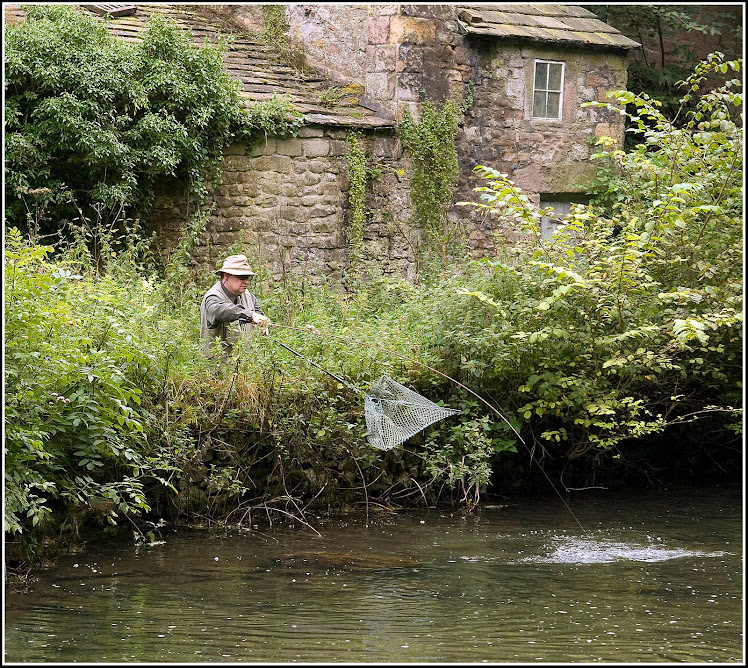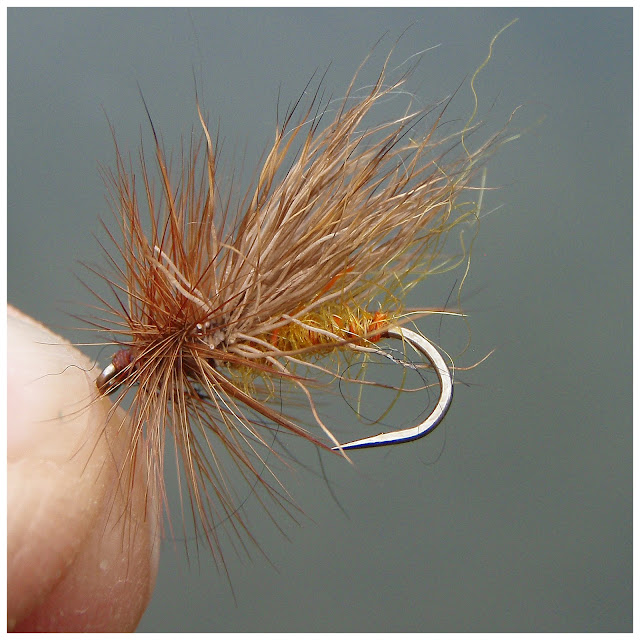The recent Northerly winds and the low angle of the sun in the afternoons now conspire to ripple the surface with bright highlights, which contrast with the shaded water and present an awkward decision to the Dry Fly angler.
On days like today it can be a good idea to break the "Rule" and instead choose a fly you can see against the awkwardly lit surface. A black fly will show up well on the silvery water, but become tricky to see in the shade. A pale fly, to mimic the Pale Watery flies we have been getting on most days recently, will show up well on the shaded water, but be almost invisible on the bright, wind raised ripples.

What to do? Well I tied on a Double Badger today. The pale hackle showed up well enough in the shade and the dark body was clear to see in the bright ripples. I'm sure it was not as interesting to the grayling and the trout as a more imitative fly would have been, but at least I was striking when the fly was taken...
This tactic of breaking the "Match the Hatch Rule" has served me well for forty years, try it next time the fly is just proving too hard to keep in view and see if it serves you well too.
Regular Rod





































